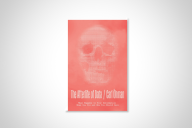You have /5 articles left.
Sign up for a free account or log in.
Campus Sexpot is the title of a moderately sleazy potboiler from 1961 -- a tale of faculty-student relations at a small-town junior college where, it seems, the graduates of Peyton Place High School continued their educations. The author was one Dale Koby. A search of online bookdealers reveals that he went on to a fairly prolific career as pulp author, turning out such memorable titles as Sex by Appointment, Lust on Wheels and Perverted Wife. Koby also edited some not-quite-scholarly editions of classic (or at least old) erotica. But most of his ouevre is missing from the catalog of the Library of Congress. It lists him only as the author of A Teacher Confesses to Sex in the Classroom, a work of nonfiction from 1965 revisiting certain themes from his first novel.
Koby was a terrible writer. (Sample: "She thrust her breasts up at him with a pert sauciness.") But by 1962, he had an attentive readership in the California mountain town of Sonora, where he had worked, for about three semesters, as a high-school teacher. David Carkeet, who was for many years director of the MFA program at the University of Missouri in St. Louis, was a student at the school at the time. As he recalls in Campus Sexpot: A Memoir, published by the University of Georgia Press, it was not hard to figure out the real-life identities of Koby’s characters.
Chances are, Carkeet would have studied the novel closely in any case, even apart from the interesting questions it raised about the relationship between life and art. He was 15 when the book appeared, and glad for whatever information on sex he could find -- such as that information was, in a book that carefully avoiding descriptions of everything below the waist. "For all the genital detail we’re going to get," notes Carkeet about one of Koby’s characters, "Linda might as well be a mermaid."
Carkeet is the winner of the award for creative nonfiction from the Association of Writers and Writing Programs. That information is announced on the cover, just above a high-school newspaper photo of the author standing on a chair, kissing a much taller girl under the mistletoe. Any writer looking back at adolescence must, of course, face the complications of embarrassment. (It is not just one part of the memories, but part of the writer’s present toolkit: There is a skill involved in handling embarrassment, in using it to carve a shape out of the past.) Inspired by the insight that the trash that once fascinated us gives the quickest access to the identities we've shed, Carkeet uses Campus Sexpot as a way to excavate memories otherwise too disobliging to recall.
"When I read the book now," he says, "its verbal avoidance of body parts with which I am actually familiar returns them to a thrilling condition of mystery. I don’t have to make an effort to enter this frame of mind. Instead, the words in Campus Sexpot that lead up to a saucy scene fire ancient neurons, and before I know it, I am transported into a state of salacious ignorance."
Any work of pulp-era smut consists of two sorts of writing. There are "the good parts," which the reader revisits until they become very familiar, and the rest, which is just barely tolerable the first time. "The chief device for advancing the story," writes Carkeet, "is not action but constant banal dialogue; the reader of a Koby novel longs to enter it not in order to have sex but in order to tell everyone to shut up."
Umberto Eco once made a similar distinction regarding the semiotics of pre-video porn films -- which were, as he put it, "full of people who climb into cars and drive for miles and miles, couples who waste incredible amounts of time signing in at hotel desks, gentlemen who spend many minutes in elevators before reaching their rooms.... To put it simply, crudely, in porn movies, before you can see a healthy screw, you have to put up with a documentary that could be sponsored by the Traffic Bureau."
Carkeet reproduces the "good bits" from the original Campus Sexpot in bold. This is not just a typographical device, or a convenience to the reader, but an index of how much they had burned themselves into his memory. One passage in particular seems like a key to understanding the effect of the novel on him. (It is also a good example of Koby’s prose at its most fine-honed.) In it, a professor named Paul Skell comments on a student, Linda Franklin, who is the titular campus sexpot:
"Hips made for the act of love," Paul muttered, "and ideally designed to accommodate a pair of hot pants. If she's a virgin, I'll donate half of my salary this year to a home for wayward girls. I've spent my life being interested in girls with hot pants. I've studied them from every angle. I believe I know all the symptoms, and Linda Franklin has them."
This came as a revelation. The original of "Paul Skell" -- easily recognizable from his description to those who attended his school -- was the dull and high-minded pedant who taught Carkeet’s freshman English class, and a leader in the local DeMolay assembly. For those not in the know, the DeMolay order is the male youth auxiliary of the Freemasons. It provides "a regimen of enforced dignity for boys at an undignified age," as Carkeet writes, "and the primary engine of uplift is a vast body of ornate ritual that reads like the Boy Scout oath as revised and expanded by Samuel Johnson." To imagine that a severe and proper adult might have "spent [his] long career" studying hot pants "from every angle" was a decisive moment in Carkeet’s sentimental education.
My hope, as a reader, was that Carkeet would track down the author of Campus Sexpot and find out what he was doing now. Koby wrote and edited for the pulp-porn industry up through the late 1960s, and Carkeet tracks down some of these subsequent efforts. (" Appointment by Sex treats a phenomenon I was unaware of when I was growing up -- supermarket cashiers doubling as lesbian prostitutes who meet the needs of shopping housewives neglected by their husbands.") But his creative output declined after 1968, for reasons that are anybody’s guess; and he died sometime in the 1980s.
Carkeet finds that, before arriving in Sonoroa, Koby had been a college instructor in San Jose, and also had affairs with two students at another high school. "There is no reason to doubt the report of A Teacher Confesses to Sex in the Classroom," writes Carkeet, "for it is hardly a self-aggrandizing story.... The author portrays himself as predatory and manipulative but shows no more contrition than one finds in the Roger Miller song of the period, 'Dang Me.' He plays mind games with his young charges, his favorite being exaggerated devotion even as the affair is ending, just to see what reaction he can get."
Insofar as the original Campus Sexpot may be said to have had a plot, its denouement occurs at the courthouse, where Koby has his characters gather for a final melodramatic reckoning. And in real life, too, Sonora had a courthouse, where Carkeet’s father served as the town’s judge. The final chapter of Campus Sexpot: A Memoir is a portrait of the author’s old man -- a recognition of his failings, but also a tribute to him as someone with the moral center that the pulp novelist lacked.
It's not for readers to determine the justice of that conclusion, of course: We know only as much as Carkeet tells us. But as an ending, it certainly follows from the book's effort to work out the parallels and the divergences between fact and fiction.
It also flows from the memoiristic logic of deriving insight from embarrassment. The 15 year-old reader of the novel grew up to be a novelist and a writing teacher himself. No doubt he had a somewhat romanticized version of Koby at the back of his mind -- remembering him as freewheeling beatnik living outside respectable society, and so on. How humiliating to discover that, all along, the more complex and interesting figure may have been your real father, not the surrogate.








